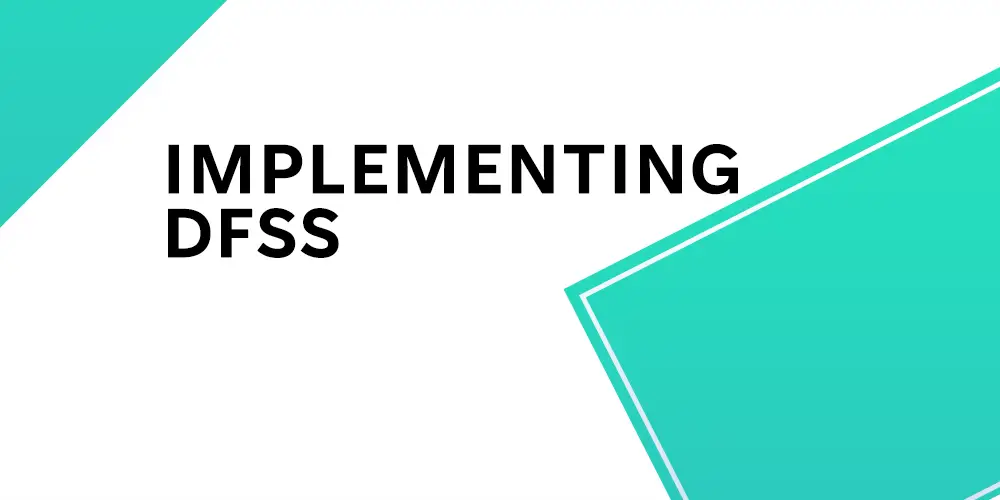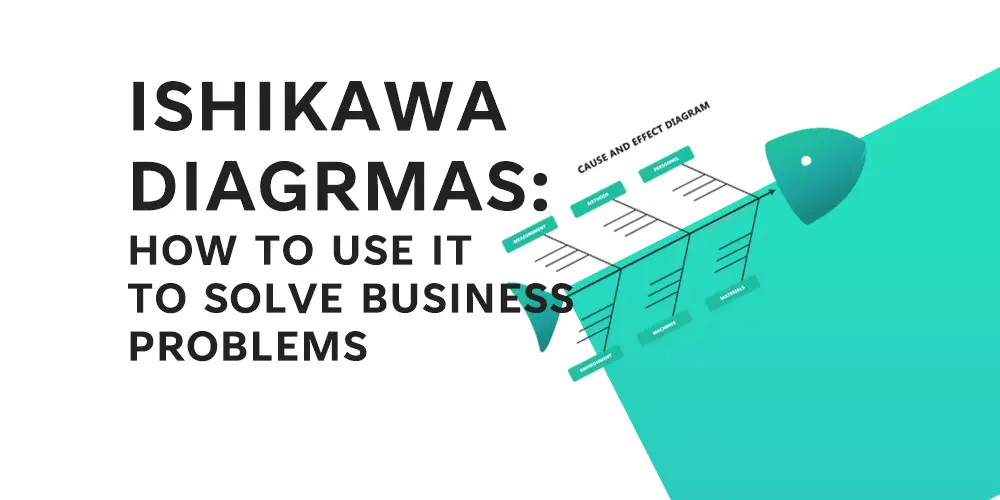Design for Six Sigma (DFSS) is an approach that blends the power of traditional Six Sigma with design thinking ideas. It is a process improvement method that focuses on building and developing more efficient, effective, and customer-focused goods, services, and processes. DFSS’s mission is to develop products and processes that are not only high in quality but also suit the needs of the customer.
In today’s competitive corporate world, the necessity of DFSS cannot be emphasised enough. Implementing the methodology can result in considerable improvements in product design and development, better efficiency and cost reductions, and increased customer satisfaction. Furthermore, DFSS can assist firms in promptly identifying and resolving problems, which can lead to improved income and growth.
This blog post will give you an overview of DFSS and its benefits, as well as instructions on how to implement it in your organisation. We will also go over the various DFSS tools and methodologies, as well as some of the obstacles and best practises for effective deployment. This post will provide essential insights and specific methods for improving your products and processes, whether you are a business leader, a process improvement professional, or simply interested in learning more about DFSS.
Table of Contents
What is DFSS?
Definition and Explanation of DFSS

DFSS is an approach that blends the ideas of traditional Six Sigma with design thinking. It is a way of process improvement that focuses on designing and developing more efficient, effective, and customer-focused goods, services, and processes. DFSS is a proactive approach to process improvement that tries to remove faults and enhance the quality of goods and processes from the very beginning of the design phase, rather than trying to address problems that have already occurred.
Key Principles of DFSS
DFSS is founded on numerous key principles, including:
- Customer focus: DFSS is customer-centric, meaning that it focuses on understanding and meeting the needs of the customer.
- Define, Measure, Analyze, Design, Verify (DMADV): DFSS follows a structured process that includes defining the problem or opportunity, measuring current performance, analysing the data, designing the solution, and verifying that the solution is effective.
- Data-driven decision making: DFSS bases its decisions mainly on data. It entails gathering and evaluating data in order to comprehend the problem or opportunity and assess the success of the solution.
- Teamwork: It is a team-based strategy in which people from various departments and disciplines collaborate to enhance goods and processes.
Comparison with DMAIC Methodology
While both DFSS and DMAIC are process improvement approaches, they differ significantly. The primary distinction is that DMAIC is a reactive technique, aiming to discover and eliminate flaws in an existing process. DFSS, on the other hand, is a proactive approach that focuses from the start on designing and producing products and processes that are more efficient, effective, and customer-focused. Furthermore, DFSS emphasises design thinking, whereas DMAIC is more concerned with statistical analysis.
In summary, DFSS is a method that focuses on the design and development of high-quality products, services, and processes that match the expectations of customers. DMADV is a proactive strategy that follows a systematic procedure, is team-based, and mainly depends on data-driven decision-making. While DMAIC is a methodology for process improvement, it is more reactive and focuses on statistical analysis.
The Benefits of DFSS
Improved Product Design and Development
One of the primary advantages of DFSS is that it assists firms in designing and developing more efficient, effective, and customer-focused solutions. It guarantees that goods fit customers’ wants and preferences by incorporating them in the design process. Furthermore, it assists firms in identifying and eliminating possible problems before they emerge, which saves time and money in the long term.
Increased Efficiency and Cost Savings

DFSS can also contribute to enhanced organisational efficiency and cost savings. DFSS can help firms save money on rework and repairs by eliminating flaws and enhancing the quality of products and processes. Furthermore, DFSS assists firms in reducing waste and improving overall operational efficiency.
Enhanced Customer Satisfaction
Because DFSS lays a high emphasis on customer happiness, it can lead to increased customer satisfaction. DFSS guarantees that products and processes are built with the consumer in mind by understanding and addressing their demands. As a result, consumer loyalty and repeat business may increase.
Real-world Examples of Companies using DFSS
Many businesses have successfully used DFSS, resulting in significant gains. GE Appliances, which used it to build a more energy-efficient refrigerator, is one famous example. GE Appliances was able to cut development time in half while reducing energy use by 30%. Boeing, for example, used it to design and build its 787 Dreamliner. Boeing was able to reduce development time by 20% while improving overall aircraft quality by utilising the methodology. These examples highlight the usefulness of DFSS in product design and development, as well as how it may lead to increased efficiency, cost savings, and increased customer satisfaction.
Design for Six Sigma Tools and Techniques
Design of Experiments (DOE)
The Design of Experiments (DOE) is a tool for determining the optimal solution to a problem or opportunity. It entails systematically adjusting parameters that may have an impact on the process or product and then measuring the results to establish the best option. This technique is very beneficial for determining the cause-and-effect link between various elements and overall process or product performance.
Failure Modes and Effects Analysis (FMEA)

Failure Modes and Effects Analysis (FMEA) is a tool for identifying potential failure modes in a process or product and assessing the consequences of those failures. Identifying potential failure modes, estimating the likelihood and severity of such failures, and then establishing controls to prevent or minimise those failures are all part of the process. This technique is very beneficial for anticipating and addressing possible difficulties.
Download our FMEA Template
Quality Function Deployment (QFD)
QFD (Quality Function Deployment) is a technique for translating client demands and requirements into particular design features. It entails building a matrix that connects consumer needs to specific design features and then using that matrix to drive the design process. This tool is especially beneficial in ensuring that products and processes are built with the customer in mind.
Statistical Process Control (SPC)
Statistical Process Control (SPC) is a tool for monitoring and controlling processes. It entails gathering data on a process, evaluating it, and then using the data to find and eliminate sources of variance. This tool is very effective for identifying and addressing process problems, as well as ensuring that the process remains under control.
Other Tools and Techniques Commonly used in DFSS
In addition to the technologies described above, the methodology frequently use other tools and strategies such as:
- Pareto charts are used to determine the most important factors influencing a process or product.
- To discover potential sources of a problem, use fishbone diagrams.
- Flowcharts are used to visualise the flow of a process.
- Gage Repeatability and Reproducibility (GR&R), used to assess measurement system accuracy.
- Control charts are used to check the long-term stability of a process.
All of these tools and approaches are used in DFSS to detect and eliminate faults, enhance product and process quality, and boost efficiency and customer satisfaction.
How to Implement Design For Six Sigma
Step 1: Identifying the problem or opportunity for improvement
Identifying the problem or opportunity for improvement is the first step in implementing DFSS. This can be accomplished through the evaluation of consumer complaints, the analysis of process data, or the surveying of staff. Once the problem or opportunity has been identified, it is critical to comprehend its scale and significance.
Step 2: Creating a team and assigning roles and responsibilities
Once the problem or opportunity has been identified, the next step is to form a team to address it. Individuals from various departments and disciplines who have the requisite abilities and expertise to address the problem should form the team. It’s also critical to define each team member’s tasks and responsibilities.
Step 3: Defining project objectives and metrics
The next step is to establish project objectives and metrics. This includes determining what tasks must be completed and how success will be judged. Setting quantifiable goals allows progress to be recorded and assessed.
Step 4: Applying tools and techniques
Following the definition of project objectives and metrics, the next stepis to use the relevant tools and procedures. Design of Experiments (DOE), Failure Modes and Effects Analysis (FMEA), and Quality Function Deployment are examples of such tools (QFD). These tools and procedures should be used by the team to examine the problem or opportunity, as well as to create and implement a solution.
Step 5: Monitoring and controlling the process
Following the implementation of the solution, it is critical to monitor and regulate the process to verify that the solution is effective and that the process continues under control. This could include employing technologies like Statistical Process Control (SPC) to monitor key performance indicators and identify and address any issues that occur. It is also critical to examine the process on a regular basis to ensure that it remains aligned with the project objectives and metrics.
In conclusion, implementing DFSS entails identifying the problem or potential for improvement, forming a team, delegating roles and duties, establishing project objectives and KPIs, using DFSS tools and procedures, and monitoring and controlling the process. Each of these processes is crucial to the project’s success and necessitates a systematic and planned strategy to ensure the desired goals are met.
Challenges and Best Practices
Common Challenges Faced when Implementing DFSS
Implementing DFSS can be difficult, and firms may encounter a number of roadblocks along the way. Among the most common difficulties are:
- Employee resistance to change: Employees may be resistant to change and unwilling to adopt new processes and tools.
- Lack of resources: Organizations may lack the resources, such as time and money, required to adopt the methodology.
- Inadequate expertise: Organizations may lack the requisite expertise or abilities to implement the methodology.
- Difficulty in assessing progress: Measuring success and demonstrating the benefits of the project to stakeholders may be difficult.
- Difficulty in keeping momentum: It may be difficult to retain momentum and sustain the project’s gains in the long run.
Best Practices for Overcoming these Challenges
To overcome these obstacles, it is critical to:
- Employees and stakeholders should be informed about the benefits of the methodology.
- Employees should be trained and supported in order to accept new processes and tools.
- Obtain the resources, such as time and money, required to implement the methodology.
- Hire or contract professionals to assist with the methodology implementation.
- Use metrics to track progress and illustrate the value of the methodology.
- Continuously monitor and enhance the process in order to retain momentum and sustain the methodology gains.
Tips for Successful DFSS Implementation

- Begin small: Begin with a trial study to assess the viability of DFSS for the project. This will aid in gaining momentum and demonstrating the benefits of DFSS as a project methodology to stakeholders.
- Communicate: Communicate the project’s goals and progress to employees and stakeholders to secure buy-in and support.
- Provide instruction: Employees should be trained and supported to ensure they have the essential skills and knowledge to implement the DFSS project methodology.
- Monitor and improve on a regular basis: Maintain momentum by continuously monitoring and improving the process to ensure that it remains aligned with the project objectives and metrics.
To summarise, implementing DFSS might be difficult, but with the appropriate approach and best practises, firms can overcome challenges and achieve success. Successful implementation requires communicating the benefits, offering training and assistance, leveraging metrics, and continuously monitoring and improving the process.
Conclusion
Finally, Design for Six Sigma (DFSS) is a powerful methodology that blends standard Six Sigma ideas with design thinking. It is a process improvement method that focuses on building and developing more efficient, effective, and customer-focused goods, services, and processes. DFSS provides advantages such as improved product design and development, increased efficiency and cost reductions, and increased customer satisfaction.
Implementing DFSS entails a structured process that includes identifying the problem or opportunity for improvement, forming a team, assigning roles and duties, setting project objectives and KPIs, using DFSS tools and techniques, monitoring and controlling the process, and so on. However, implementing DFSS can be difficult, and firms may encounter roadblocks along the way. To overcome these obstacles, it is critical to promote the benefits of DFSS, provide training and support, secure the necessary resources, and track progress using metrics.
We have offered an overview of DFSS and its benefits, as well as instructions on how to implement it in your organisation, in this blog article. We’ve also talked about different DFSS technologies and methodologies, as well as some of the obstacles and best practises for successful adoption. We hope this post has provided you with useful insights and tangible ways to improve your products and processes. Remember that achieving the intended results demands a methodical and structured strategy, as well as continual improvement.








